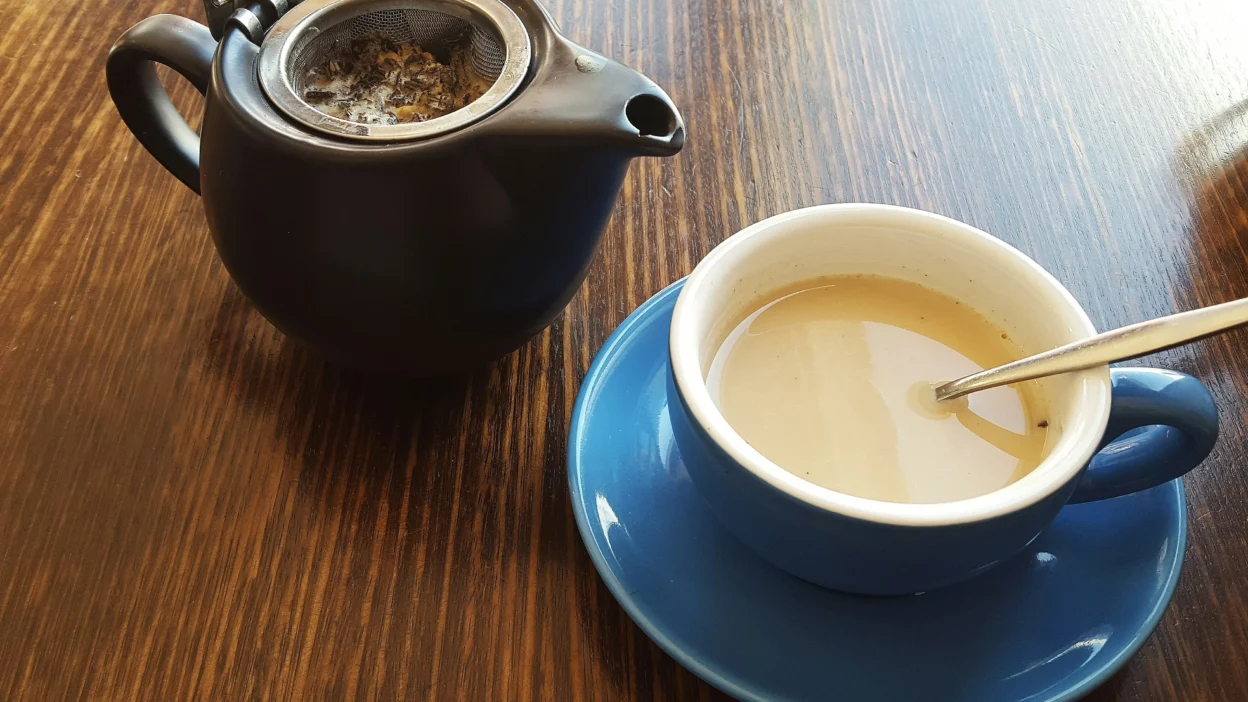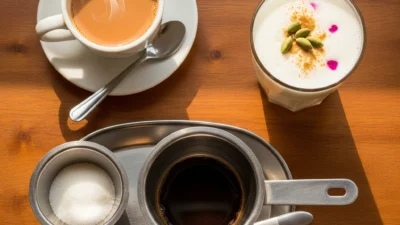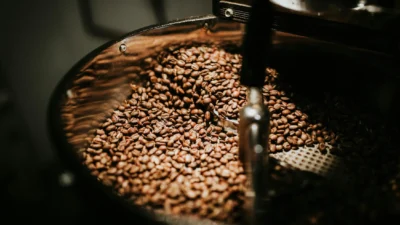Masala Chai – the spiced, milky tea from India – is more than just a beverage; it’s a cultural icon. Beloved for its rich aroma and comforting sweetness, a cup of chai is a daily ritual in millions of Indian households. In fact, there’s a saying that for many Indians, chai is not just tea, it’s an emotion. From bustling city streets where chaiwallahs (tea vendors) vigorously mix hot tea between steel kettles, to modern cafés serving chai lattes, this drink bridges India’s ancient traditions with contemporary life. In this blog, we’ll explore the fascinating history of masala chai, the varieties of chai found across regions, and the health benefits that make this flavorful brew more than just a tasty treat.
History of Masala Chai
Masala chai’s story is a blend of ancient legend and colonial history. According to folklore, a spiced drink resembling chai was created over 5,000 years ago by an Indian king seeking a medicinal concoction. This early version (essentially an Ayurvedic kadha) contained a mix of healing spices – ginger, clove, cardamom, etc. – but notably no tea leaves. Back then, tea (from the Camellia sinensis plant) was not yet part of Indian diets; any “chai” was essentially a herbal tisane.
Fast-forward to the 19th century: tea leaves finally make an appearance in chai, thanks to the British. The British East India Company, worried about China’s monopoly on tea, began large-scale tea plantations in Assam in the 1830s. By the early 20th century, the British colonial powers aggressively promoted tea drinking within India, setting up tea stalls in factories and train stations. However, Indians weren’t fond of plain black tea served British-style. They found it too mild and expensive, so street vendors started adding spices, milk, and sugar to please local palates (and stretch the tea supply). As food historian Krish Ashok quips, “Indians never quite appreciated the mild flavors of tea and immediately proceeded to add spices like ginger and cardamom to enliven it, and thus was born masala chai.” The Indian adaptation was a hit – turning colonial tea into a distinctly Indian masala chai.
By mid-20th century, masala chai had firmly rooted itself as India’s favorite drink. From Punjabi farmers starting the day with a strong brew to Bengali office-goers taking afternoon “chai breaks,” the beverage became an integral part of daily life. Chai also wove itself into Indian social customs – offering a cup of hot chai to guests is a symbol of hospitality, and phrases like “chai pe charcha” (conversation over tea) underscore its role in friendly gatherings. Even Bollywood references it in songs and scenes as a catalyst for romance and family meetings.
Today, India is one of the world’s largest tea producers and consumers. Chai culture has spread globally as well, largely through the diaspora and enthusiastic tea lovers. You’ll find “chai” on café menus from New York to Tokyo. Of course, Western coffeehouses often serve it as a “chai latte” – essentially masala chai with frothy milk – adapting the drink for international audiences. But whether you sip it from a rustic clay cup (kulhad) on an Indian railway platform or in a trendy ceramic mug elsewhere, masala chai’s essence remains the same – a harmonious blend of tea, spice, milk, and sugar, steeped in history.
Varieties of Masala Chai
One of the beauties of masala chai is its incredible diversity. The core formula – black tea brewed with spices, milk, and sugar – is endlessly tweaked across regions and households. Chai recipes often pass down generations, and no two cups are exactly alike. Some prefer it extra spicy, others extra sweet. Let’s look at a few popular varieties of chai in India and what makes each unique:
| Chai Variety | Key Ingredients & Style | Notes / Region |
|---|---|---|
| Masala Chai (Standard) | Black tea, milk, sugar, and a mix of spices like cardamom, ginger, cloves, cinnamon, sometimes pepper. | The classic spiced tea found across India. Recipe varies by region and family, but cardamom and ginger are most common. |
| Adrak Chai (Ginger Tea) | Black tea, plenty of fresh ginger root, milk, sugar. Often no other spices. | A zesty chai popular as a home remedy for colds and rainy days. Warming and pungent from ginger. Common in North India. |
| Elaichi Chai (Cardamom Tea) | Black tea, crushed green cardamom pods, milk, sugar. Sometimes a pinch of saffron for aroma. | Fragrant and soothing, often served to guests. Cardamom lends a sweet floral note. A favorite in many Indian households. |
| Kashmiri Chai (Noon Chai) | Green tea leaves, baking soda, milk, salt (and often a bit of sugar), topped with crushed almonds or pistachios. | A pink, mildly spiced tea from Kashmir. It’s brewed with salt and soda to achieve its color. Rich, creamy, and usually enjoyed with nuts. |
| Sulaimani Chai (Lemon Spiced Tea) | Black tea brewed strong with spices like cinnamon, cardamom, clove, sometimes ginger; no milk. Finished with a squeeze of lemon and sweetened with sugar or honey. | A clear amber tea popular in Kerala (and the Middle East via Kerala). Light and digestive. Often served after meals to cleanse the palate. |
| Irani Chai (Dum Tea) | Black tea simmered separately as a strong decoction; milk simmered separately with sugar and a touch of khoya (thickened milk). Mixed together to serve. Minimal spices (sometimes cardamom). | A specialty of old Hyderabadi cafés, introduced by Persian immigrants. Extremely creamy, sweet, and rich (almost dessert-like). Often enjoyed with Osmania biscuits. |
As you can see, “chai” is not one-size-fits-all. In Mumbai, you might grab a quick Cutting Chai, which isn’t a recipe variation but a serving style – half a glass of strong masala chai, meant to be a quick pick-me-up on the go. In contrast, a household in Kolkata might add a dash of fennel to their masala, while a Punjabi dhaba (roadside eatery) might brew chai extra strong (“kadak chai”) with more tea and spice to jolt you awake.
Regional preferences also depend on climate and culture. For example, the salty, creamy Noon Chai warms Kashmiris in the cold Himalayan weather, while the light, citrusy Sulaimani suits the coastal, tropical climate of Kerala and aids digestion after spicy meals. Irani chai, on the other hand, reflects a legacy of Persian tea culture in India – slow-cooked and enriched with evaporated milk for a decadent treat. This diversity in chai preparations highlights how adaptable and beloved the drink is – each community makes it their own.
Health Benefits of Masala Chai
Beyond its delightful taste and aroma, masala chai offers a range of health benefits thanks to the powerful spices and tea it contains. It’s a feel-good drink that can also be good for you. Here are some of the notable benefits, backed by both tradition and science:
- Rich in Antioxidants: Masala chai typically uses robust black tea as its base, which is packed with antioxidants (like polyphenols and catechins). These compounds help fight free radicals in the body. Antioxidant-rich diets are linked to better heart health and reduced inflammation. In fact, the blend of black tea with clove and cardamom in chai may help lower cholesterol build-up and support cardiovascular health. Each cup of chai can provide a gentle boost to your body’s defenses.
- Aids Digestion: One reason masala chai was originally conceived as an Ayurvedic remedy is its positive effect on digestion. Spices like ginger, cardamom, clove, and fennel (commonly used in chai mixes) are well-known carminatives – they help in relieving gas, bloating, and improving digestion. Ginger, in particular, has proven digestive benefits and can soothe nausea. A warm cup of adrak chai after a heavy meal can stimulate digestion and ease any stomach discomfort. In traditional households, chai with a bit of tulsi (holy basil) or just cardamom is a go-to after rich or oily foods to settle the stomach.
- Reduces Inflammation & Boosts Immunity: Chai spices are powerful anti-inflammatory and immune-boosting agents. Ginger contains gingerol, a potent anti-inflammatory compound that can help with joint pain and general inflammation in the body. Cloves also have anti-inflammatory and analgesic properties. Meanwhile, cinnamon and cardamom have antimicrobial effects and are believed to enhance immune function. Together, the spice blend in masala chai acts as a soothing, immunity-supporting tonic – one reason Indians often reach for a hot chai when feeling under the weather. In fact, a spiced tea with ginger and cinnamon is a common home remedy for colds and coughs, helping to clear congestion and throat irritation. Research suggests that regularly consuming these spices may help strengthen your body’s resistance to infections.
- Controls Blood Sugar and Supports Heart Health: Cinnamon, a staple in masala chai, has been studied for its role in improving insulin sensitivity and lowering blood sugar levels. Drinking chai (with minimal sugar) could thus be better for blood sugar management than sugary sodas or juices. Additionally, black tea itself has benefits for heart health – studies have shown that regular tea drinkers may have a slightly lower risk of heart disease and lower blood pressure. Chai’s combination of tea antioxidants and spices like cinnamon, clove, and cardamom (which can help lower cholesterol) makes it a heart-friendly indulgence when consumed in moderation.
- Energy Boost (with Less Jitters): Chai provides a gentle caffeine kick from the black tea, typically about 25–50 mg per cup (depending on strength) – roughly half the caffeine of a cup of coffee. This means chai can increase alertness and give you energy, but many people find it less jittery on the nerves than coffee. The presence of L-theanine in tea slows the absorption of caffeine, leading to a smoother, more sustained energy boost. Moreover, the spices in chai, such as ginger and cardamom, can invigorate the senses. The overall effect is a balanced uplift in mood and focus. It’s the perfect afternoon pick-me-up without the crash.
- Weight Management: Surprisingly, your cup of masala chai might help with weight management. The combination of tea and spices has been noted to potentially aid metabolism. Black tea polyphenols may promote fat breakdown and block some fat absorption. Spices like black pepper (often a tiny part of chai masala) contain piperine which could help in fat metabolism as well. Also, chai’s strong flavors and milk content make it quite satisfying; you might find it curbs cravings for snacks or desserts. A moderately sweet, milky chai can stand in as a more wholesome treat, possibly preventing overeating later. (Do watch the added sugar, though – that can add calories quickly.)
- Stress Relief and Comfort: Beyond the physical health metrics, one cannot ignore the mental and emotional wellness aspect of chai. The very act of pausing for a chai break can reduce stress. Aromatic spices like cardamom and cloves have soothing aromatherapy effects. A warm cup in your hands provides a moment of comfort, which is why many refer to chai as “comfort in a cup.” In India, the routine of morning and evening chai is almost meditative – it gives a rhythm to the day and a chance to slow down and socialize, indirectly supporting mental health. So in a way, chai offers holistic benefits: it nurtures the body and the soul.
Lastly, it’s worth noting that while masala chai can be very healthy, moderation is key. Chai usually contains sugar and whole milk, so excessive cups can rack up calories. If you’re health-conscious, you can opt for less sugar or swap in honey/jaggery, and use low-fat milk or plant-based milk. Also, sensitive individuals or those with conditions like acid reflux might find too much spice or caffeine can be irritating. But for most people, a couple of cups of masala chai a day are a delightful, healthful addition to their diet – a beverage that has stood the test of time in delivering both flavor and wellness.
In summary, masala chai isn’t just a drink steeped in history and culture – it’s also imbued with beneficial properties from its ingredients. From anti-inflammatory effects to aiding digestion and providing a gentle energy lift, this spiced tea earns its reputation as a “feel-good” beverage. So the next time you cradle a warm cup of chai, take comfort in the fact that it’s doing more than just delighting your taste buds – it’s also treating your body kindly.





